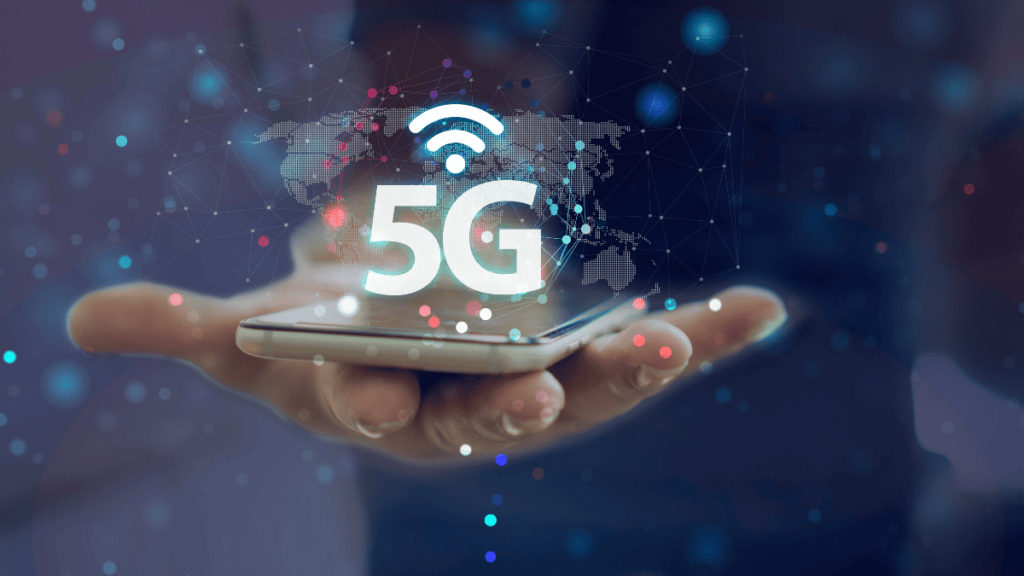A team of scientists has made a groundbreaking advancement by developing a wireless internet technology that promises to be 9,000 times faster than current 5G networks. This new ultra-fast internet could revolutionize how we connect in highly crowded locations such as festivals, concerts, sporting events, and bustling urban centers, where the demand for data transmission is immense and traditional networks struggle to deliver quality service.
In recent years, the increasing use of connected devices—smartphones, tablets, smartwatches, and even personal objects in home and commercial networks—has put immense pressure on data transmission networks. While Wi-Fi and 5G, which operate at relatively low frequencies, have been efficient in simpler settings like homes or offices, these systems encounter significant congestion in densely populated spaces, resulting in drastic drops in connection speed and even service interruptions.

At events with large crowds, such as concerts, music festivals, major conferences, or sports stadiums, the number of devices connected simultaneously can reach thousands, creating a significant bottleneck in transmission bandwidth. This leads to a frustrating experience for users who cannot send or receive data quickly and efficiently. The issue becomes even more pronounced as demand for high-speed connections continues to grow, driven by advances in technologies like high-resolution video streaming, online gaming, and the increasing reliance on cloud services.
The team of researchers behind this ultra-fast internet unveiled an innovative study published in The Journal of Lightwave Technology, explaining the fundamental principles of this new technology. According to Dr. Zhixin Liu, senior professor at UCL Electronic & Electrical Engineering and the lead author of the study, the solution lies in combining two existing technologies: high-speed electronics and millimeter-wave photonics. For the first time, these two approaches have been integrated to create a wireless data transmission system with unprecedented capacity.
While current Wi-Fi and 5G technologies operate at limited frequencies ranging from 600 MHz to 6 GHz, this new technology utilizes a data transmission range spanning from 5 GHz to an astonishing 150 GHz. This means it can handle significantly more information per second without facing the bottlenecks typical of slower networks. This ultra-wideband capability enables multiple devices to connect simultaneously while maintaining high transmission quality and avoiding the congestion issues typical of large-scale events.
How Does This Technology Work?
The core innovation of this new internet system lies in the generation and amplification of radio signals based on light. The scientists have developed a method to generate signals using high-speed electronic devices and combine them with radio signal generators employing millimeter-wave photonics. This fusion of technologies allows for much faster data transmission by leveraging a broader frequency spectrum.
One of the key differentiators of this technology is its ability to operate at extremely high frequencies, enabling the simultaneous transmission of large volumes of data without any loss in connection quality. Additionally, the millimeter waves used in this technology ensure that the signal is more precise and less prone to external interference, such as other nearby devices or even physical barriers in the environment.
According to Professor Izzat Darwazeh, director of the UCL Institute of Communications and Connected Systems (ICCS) and co-author of the study, this technology “takes wireless communication to a new level, keeping pace with advances in optical and radiofrequency communications already used in next-generation digital network infrastructures.” He also emphasized that this innovation will significantly improve connectivity experiences in locations currently facing major data transmission challenges.
Although this new ultra-fast internet was initially conceived as a solution for connectivity problems at large-scale events, its implications are far broader. The ability to transmit data at unprecedented speeds could revolutionize various sectors of society. Smart cities, for instance, could integrate this technology into their monitoring and traffic control systems, enabling more efficient communication between autonomous vehicles, traffic sensors, and emergency services.
Moreover, the healthcare sector could greatly benefit from this technology, especially in hospitals and clinics that rely on large volumes of data for remote patient monitoring, imaging exams, and telemedicine. With ultra-high-speed internet, real-time diagnoses, precise transmission of medical data, and more efficient patient support would become possible, regardless of geographical location.
The transportation sector could also integrate this technology into air traffic control, railways, and ports, ensuring fast and effective communication between different infrastructures. Similarly, the manufacturing sector could leverage this internet to interconnect machines, robots, and control systems, optimizing production and ensuring greater efficiency.
When Will This Technology Be Available?
Although still in the prototype phase, researchers are optimistic about the potential of this new technology. They believe that within three to five years, it could be incorporated into commercial equipment and begin large-scale deployment. The next steps include refining the prototype and conducting real-world tests in scenarios like large events and high-density public spaces to ensure the technology performs as expected.
Dr. Zhixin Liu highlighted that this development could be a game-changer for the future of wireless communications, with its positive impact extending across various sectors, from entertainment to medicine and transportation. The expectation is that as this technology becomes more accessible, it will revolutionize not only how we connect at large-scale events but also how we live in an increasingly connected world.
Thus, the future of communication is on the verge of an unprecedented leap, and the internet we know today, even with advanced technologies like 5G, may soon seem like a relic of the past compared to the possibilities unlocked by this new digital revolution.

